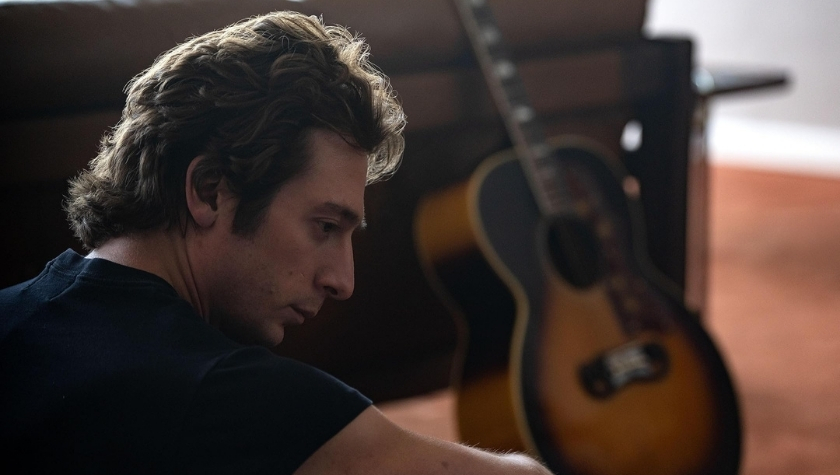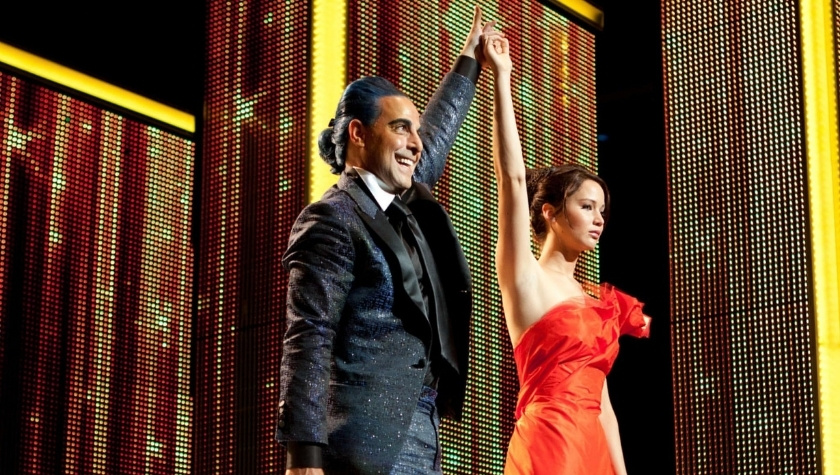What is a conflict in a story? It’s simply something that a character must face. It could be big (an asteroid heading toward the earth) or small (pizza or tacos for dinner?).
Conflict is the reason we go to the movies, watch TV or read books. It drives story and makes audiences empathetic with the characters. Without conflict, there’s no story.
Even the stories we tell our friends are filled with conflict; if not you’re likely boring them.
When something exciting happens to us, we want to share it. The reason is because it’s filled with conflict that we think will gain the interest of those we’re telling. But what are the different types of conflict, and how does conflict help storytellers keep audiences engaged?
There are mainly two types, external and internal, but it goes a little deeper than that. Let’s talk about the types of conflict in a story and how it can help you develop your screenplay.
What is Internal Conflict?
In Springsteen: Deliver Me From Nowhere, rock superstar Bruce Springsteen (Jeremy Allen White) struggles with mental illness as he proceeds to write a follow up album after a sold-out tour. While he faces external pressures, the story is focused on internal conflict, or Person vs. Self.
Internal conflicts are the struggle within a character, such as emotions, fears, beliefs or moral dilemmas. They are the voice in our heads telling us we’re not good enough, filling us with doubt or causing us to be afraid. In Springsteen’s case, his internal conflict centered around trying to bridge his feelings of the past with the present.


What is External Conflict?
External conflict is everything other than Person vs. Self. It can be bad guys in an action movie, an opponent in a sports drama, a tornado tearing through Oklahoma or a serial killer in a thriller. External conflicts include:
Person vs. Person
Think of this as a conflict between the protagonist and another character, for example: Simba vs. Scar in The Lion King or Superman vs. Lex Luthor in Superman.
Character vs. Nature
In this example, the protagonist must battle forces of nature like storms, an animal or natural disaster. Some examples include: Twisters, Anaconda, Armageddon and Snakes on a Plane.
Nature isn’t just relegated to Earth. The Martian pits the protagonist against Mars’ nature.
Person vs. Society
In this type of external conflict, the protagonist is making a stand against something based in society. There are many films based on real events that can be considered Person vs. Society, but that’s not always the case:
- Erin Brockovich
- To Kill a Mockingbird
- The People vs. Larry Flynt
- Barbie
- The Hunger Games


Character vs. Fate or Destiny
In this type of conflict, the protagonist struggles against a predetermined destiny or fate. Two prime examples of this are found in the science fiction genre. Both Luke in Star Wars and Neo in The Matrix find conflict in fate and destiny.
Character vs. Technology
When the robots become self-aware, that’s when you get the person battling technology. Whether it’s HAL 9000 in 2001: A Space Odyssey or humans fighting the Terminator, the character versus technology is another type of external conflict that can drive the story.
It doesn’t always have to be science fiction though. You can argue Sleepless in Seattle or You’ve Got Mail takes this approach as the protagonist in these movies face technological conflict via phone, radio or email.
Person vs. Supernatural
The Ghostbusters, Van Helsing and anyone fighting Godzilla would be examples of a character in conflict with the supernatural. There are plenty of stories about ghosts, witches, vampires, King Kong and other monsters that cause external conflict.
Literary Conflict
All of the examples above that are external conflict, as well as internal conflict, can be types of literary conflict. Bram Stoker’s Dracula is supernatural, Frankenstein is character vs. technology, and To Kill a Mockingbird is a conflict with society. Internal and external conflict doesn’t begin or end with movies or TV but can be part of books or even corporate marketing material.


Can Internal Conflict and External Conflict Co-Exist in a Story?
They better! A protagonist often struggles with both internal and external conflict within a story.
Let’s look at Barbie, which follows the doll as she experiences an existential crisis and heads out into the real world to figure out why she is starting to have strange thoughts about life.
Barbie (Margot Robbie) faces an external conflict regarding society and her place in the world. She’s fighting the social norms of perfection and unrealistic female expectations. However, she is also experiencing internal conflict when she first ponders what happens when we die and leads to her questioning what it means to be “Barbie.”
Types of Narrative Conflict
Narrative conflict means that the conflict drives the story. While most movies have conflict that drives that story, there are plenty that don’t. In fact, there are movies where, regardless of any conflict, the protagonist doesn’t really change at all.
Here are two popular examples:
Ferris Bueller’s Day Off: When you look at how the character changes, you’ll discover that Ferris Bueller (Matthew Broderick) is the same person he is at the end of the movie that he was at the beginning. The conflicts come within in the scenes but not the overall film. At most, you can argue it’s Ferris Bueller vs. the Principal, but that doesn’t drive his story.
Forrest Gump: This movie is filled with lots of external conflict as Forrest Gump (Tom Hanks) goes through decades fighting everything the world can throw at him. But does it drive the story? Not really. Forrest simply finds himself impossibly thrown into the defining moments of the baby boom generation.
Most movies will have narrative conflict, forcing the hero to change in some way.


Conflict Resolution
Regardless of the character’s conflict, it eventually needs to be resolved. This is part of the protagonist’s arc as they fight any type of conflict that challenges them and changes who they are throughout the story.
- Superman triumphs over Luthor
- The Tornado Wranglers in Twisters use their knowledge and expertise to calm a massive, deadly tornado
- Kyle Reese (Michael Biehn) and Sarah Connor (Linda Hamilton) beat the Terminator (Arnold Schwarzenegger)
Knowing what the different kinds of conflict are can help screenwriters and storytellers find the main struggle to help drive the movie and the motivations behind the protagonist. While this is the main conflict, you can also use internal and external conflicts within scenes.
For example, not every scene in a Godzilla movie has someone facing the giant lizard. In Godzilla Minus One, the protagonist of the story suffers from survivor’s guilt and has lots of internal conflict. Other scenes have him fighting external conflicts without Godzilla in the picture.
When screenwriters are aware of the internal and external conflict within their story and individual scenes, they can better engage the audience and truly test their protagonist throughout the story.
To Conflict is Human
When writing your screenplay, you’ll want to figure out the main conflict of the story. That’s not to say it’s the only conflict, but the one that pushes the protagonist forward.
Obviously, in Twisters, it’s not just Person vs. Nature, but that is what the movie is about. It’s important to add different types of internal and external conflict amongst the characters in the story. First off, it gives characters a reason to be there. Secondly, it’s a means to constantly challenge your protagonist.
Having strong conflicts throughout will help keep script readers and audiences engaged.

